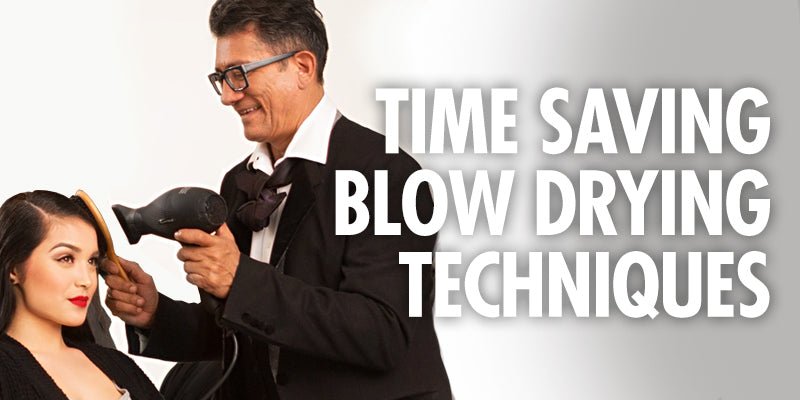
When using heat tools, dull, dry and fried hair can be a common concern from over exposure and excessive clamping. Watch as Andrew Carruthers, Cultural Ambassador for Sam Villa walks you through the 4 do’s and don’ts of flat ironing to best insure the integrity of you and your guests’ hair!
What are the do's and don'ts of product use while flat ironing?
Product use is very important when heat styling. The choice of product is even more important as it can either prevent or promote damage.
DON'T
Refrain from products that are sticky or tacky such as hairspray. Hairsprays and other tacky textured products can cause the iron to stick to the hair or create dampness. Unless your iron is specifically made for damp hair, flat ironing hair that has any indication of dampness may cause serious damage!
Why is flat ironing damp hair a don’t? An analogy to keep in mind is ironing damp clothes – this increases the chances of burning a hole in your clothes and enforces wrinkles. The outcome is similar for hair.
DO
ALWAYS use a thermal heat protectant spray that is specifically designed to use with heat tools with temperatures that go as high as 450 degrees. Our favorite is Redken Iron Shape 11, spraying from root to ends, then combed through prior to using your flat iron, because it provides maximum heat protection for your hair. It also adds shine and provides hold, too.
What importance does sectioning have during flat ironing?
Sectioning will allow for control and consistent placement of your iron. This will help to eliminate frizz and provide long-lasting styles!
DON'T
Taking thick sections is a major don't. The challenge is that the heat from the iron will not penetrate through all the hair within the section, straightening only the areas that the plates touch; the exterior parts. We end up compensating for this by passing the iron over the section several times which causes excessive heat on the outer parts of the section and only partly affecting the internal of the section. The result of this is an inconsistent style with potential damage to the hair by excessively placing heat on the hair.
A good example is cooking a steak. You place the steak on a hot grill or surface, searing the edges, but keeping the inside pink and warm. Yes, this is a great tasting steak, but the inside does not receive the same amount of heat as the outside.
Alternatively, when you roast a steak using low heat for a longer period of time then you get even temperature throughout the steak.
DO
"Skinny up" your section. Smaller sections will create a faster way to get a more even result! ¼-inch to ½-inch sections are recommended and never take a section that is wider than the length of your plates.
DON'T
Use horizontal sections. Why not? Horizontal sections tend to create flat, lifeless styles. Although straight and smooth hair is what we're going for, most people still want some volume and bounce.
DO
Use diagonal sections. Diagonal sections create roundness and that leads to more volume. Small diagonal sections will reinforce smoothness while keeping bounce and movement.
It’s time to put these first three do’s and don’ts into action:
- Starting at the nape, take a ½-inch deep horizontal section and clip up the remaining hair.
- Mist Iron Shape 11 on the section, holding it about 4-inches away from the hair.
- Comb through from roots to ends
- Starting at the root, place your flat iron in on a diagonal and follow down slowly through to the ends.
- Keep your iron on a diagonal mirroring your section.
How can we keep flat iron styles from getting wavy the next day?
The use of a comb before and during flat ironing will ensure smoothness for a longer period. Be sure to use a fine-toothed, heat safe comb!
DON'T
Flat iron the hair before combing to remove any kinks or knots. The iron seals what goes into the hair, so without removing kinks before applying heat and pressure into the sections, you will run into an extremely difficult task trying to straighten them out!
DO
Use a fine-tooth, heat resistant comb to remove kinks and knots while flat ironing. Place the teeth of your comb at the root of your diagonal section, leaving room to place the flat iron directly behind it. Lead with the comb to remove kinks, following with your iron so you’re immediately applying heat and sealing the hair from roots to the ends.
Final Words
Follow these four do’s and don’ts of flat ironing for more consistent results behind the chair. These tips are valuable to your clients as well, so be sure to teach them the right way to use their flat iron and heat styling products to prevent damage and to achieve better results.
Recommended Tools for this technique
Related Blog Posts:







